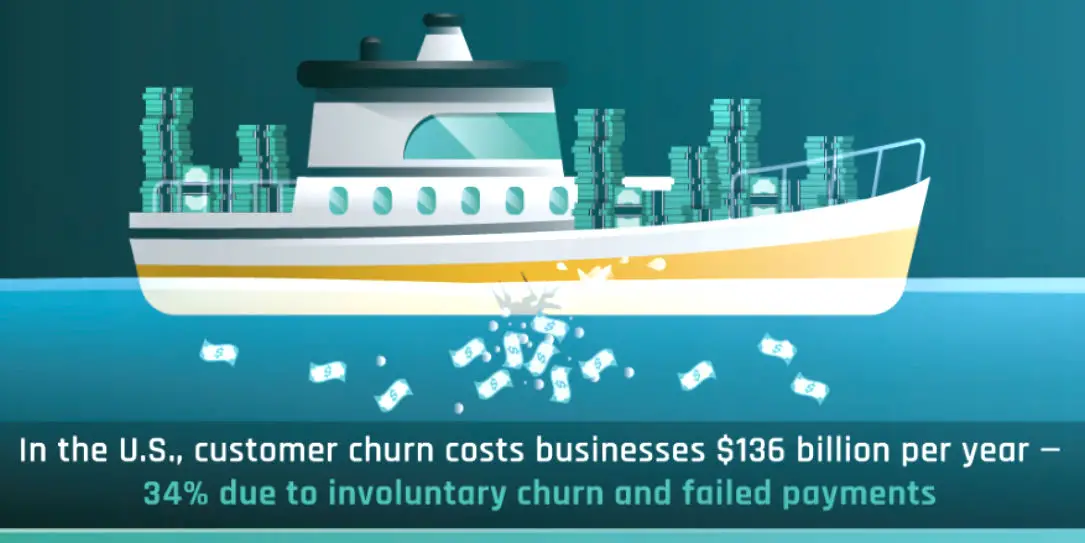Customer churn isn’t something we usually think of as a technological problem, but more than a third of the $136 billion a year companies lose to customer churn is from involuntary churn, and most of that can be attributed to or solved by technology.
For many businesses repeat customers are their lifeblood. Increasingly businesses are relying on subscription services to maintain a significant portion of their cash flow. 47% of businesses lose customers due to failed payments on auto-renewals. It costs five times more to attract new customers than it does to retain existing ones, so ensuring payments go through and that customers are happy is crucial.
Payment failure is the #1 reason for involuntary customer churn, meaning that customers don’t want to stop buying but their charge didn’t go through for whatever reason. There are a lot of reasons why payments will fail, and understanding each unique case and responding appropriately not only prevents churn but also increases customer satisfaction and loyalty.
Insufficient funds, credit limits, including day limits on spending, and changed cards or details due to new accounts or even just moving can all cause payments to be declined. Think about all the places you have to change your address when you move – do you automatically think about all your magazine and newspaper subscriptions and even your Netflix account? Chances are customers who go through these kinds of life changes aren’t even aware there’s a problem until their service is interrupted.
That’s why it’s so important to understand the situation before addressing it. Boilerplate notifications can lead to additional problems in sensitive situations, so there is an opportunity to find a customer service-oriented solution. Investigating why a payment failed can help – sometimes it just needs to be processed again. If a customer is in difficult times financially, as many are right now, offering help instead of cancellation can be a powerful tool to retain that customer for the long term.
Learn more about involuntary churn from the infographic below.

What do you think of customer churn? Let us know in the comments below or on Twitter or Facebook. You can also comment on our MeWe page by joining the MeWe social network.
Last Updated on February 3, 2021.










